AADL's Fifth Avenue Press returns with five new books & a release reception on May 5
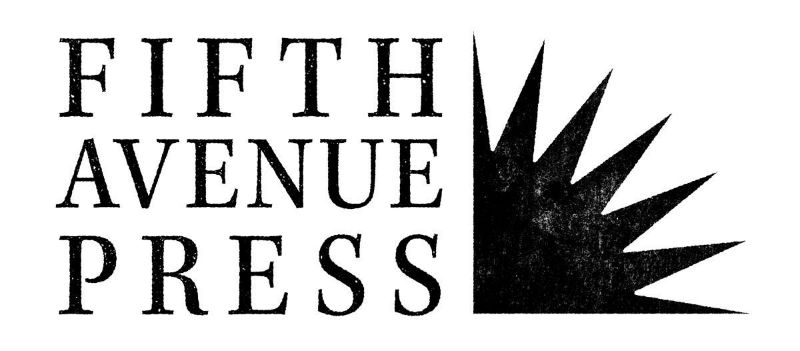
The Ann Arbor District Library's Fifth Avenue Press helps local authors produce a print-ready book at no cost -- from copyediting to cover design -- and the writers retain all rights. In return, the library gets to distribute ebooks to its patrons without paying royalties, but authors can sell their books -- print, digital, or audio -- however they choose and keep all the proceeds.
Started in 2017, Fifth Avenue launches its third round of books on Sunday, May 5, with a free catered reception from 1-3 pm in the lobby of AADL's downtown location, featuring author readings from the imprint's five new titles.
Click the book titles below to read interviews with the authors:
Large-Scale Statements: "Abstraction, Color, and Politics in the Early 1970s" at UMMA
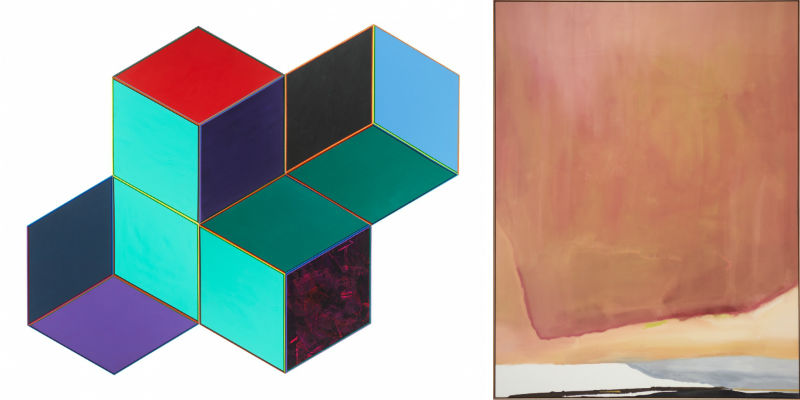
Right: Helen Frankenthaler, Sunset Corner, 1969, acrylic on canvas. University of Michigan Museum of Art, Museum purchase, 1973/1.813. © 2018 Helen Frankenthaler Foundation Inc. / Artists Rights Society (ARS), New York.
In the year-long exhibition Abstraction, Color, and Politics in the Early 1970s, the University of Michigan Museum of Art asks, “Can abstract art be about politics?”
The exhibition asks audiences to consider the once hotly debated status of abstract art almost 50 years later. Despite the gallery exhibiting only four pieces, the exhibition proves the abstract art of the 1970s has an ability to engage with major political themes then and now.
The move toward abstraction in art accelerated in the 1970s, and many artists turned to it in lieu of representational art. As UMMA points out, some were criticized for turning away from traditional means of representation. Critics suggested that abstract art could not be political, therefore believing artists to be intentionally disengaging with politics. At the same time, minority artists were challenging tenets of art history and institutions that promoted a specific set of standards in determining what “great art” was. Though some argued that abstraction was unable to convey political messages, the movement itself became political by deconstructing the status quo.
The Art of the LP: Record Store Day 2019
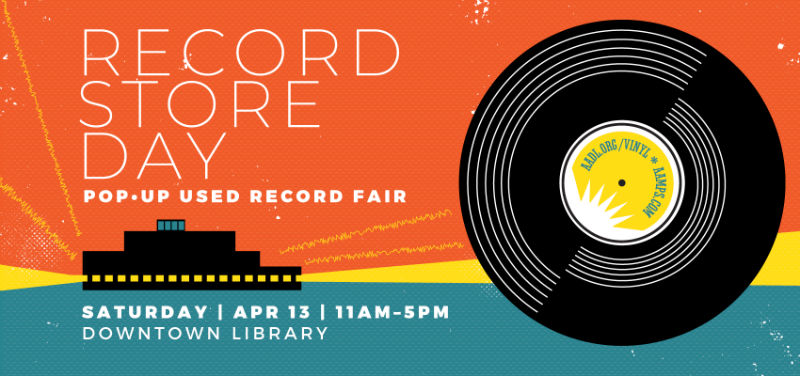
Since its inception in April 2008, fans of vinyl LPs have flocked to their favorite independent shops for the event known as Record Store Day. Created to promote patronage among local music sellers, Record Store Day has grown immensely over the last decade.
In 2017, AADL got in on the action and began hosting a pop-up record fair at the downtown library. Located in walking distance from Ann Arbor’s three record shops -- Wazoo Records, Encore Records, and Underground Sounds -- AADL aimed to provide vinyl enthusiasts another place to dig through crates, mingle with other music fans, and take a look at the growing collection of LPs available for checkout at the library.
If you missed us this year, be sure to keep an eye out for our 2020 Record Store Day next April. And if you’re clamoring for more music, be sure to check out AADL's collection of vinyl and CDs, as well as the Ann Arbor Music & Performance Server (AAMPS), where you can download local music offerings.
This year’s event at AADL saw 16 independent vendors cover more than 700 square feet of table space with their sonic wares and the volume and variety did not disappoint any enthusiastic attendees. Local DJ Aaron Batzdorfer spun tunes all afternoon, minus a brief respite where his son Porter stepped in on the wheels of steel. In the library’s Secret Lab, patrons exercised their imaginations and created their own LP album art -- many of which are posted below.
The American Scream: Arthur Miller's "All My Sons" at The Purple Rose Theatre
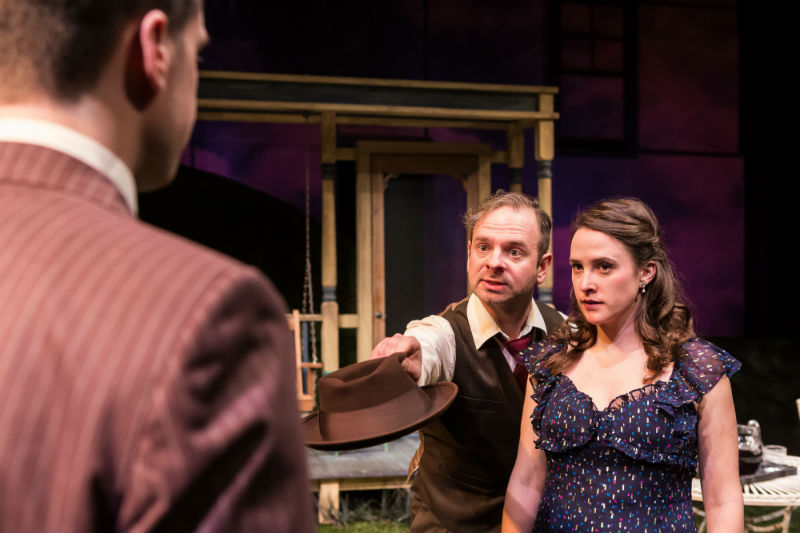
Written and taking place in 1947, Arthur Miller’s All My Sons is steeped in the emotional fallout of World War II. One might question the relevance of mounting a new production of the show today: What remains to be gleaned from this 70-plus-year-old work? However, Miller’s observations on the nature of generational sin remain as shattering and relevant as ever -- particularly when staged with the intelligence and sensitivity of The Purple Rose Theatre Company’s new production, running through June 1.
All My Sons takes place on the Keller family’s front lawn in Kokomo, Indiana, lovingly recreated with an artificial lawn, antique furniture, and a rope swing hanging from the rafters of The Purple Rose’s intimate space. Kate (Michelle Mountain) has spent three years in denial since her son Larry, a pilot, went missing in action during World War II. Her husband Joe (Richard McWilliams) and son Chris (Ryan Black) have long accepted Larry’s death and grudgingly tolerated Kate’s insistence on his survival. But their tenuous existence is upended by the arrival of Larry’s ex-girlfriend Ann (Caitlin Cavannaugh), whom Chris has secretly planned to marry after carrying on a romantic correspondence with her.
The plot thickens as details arise about Joe’s business partnership with Ann’s father, Steve, who went to prison for knowingly selling defective aircraft to the Air Force. Joe has maintained his innocence in that situation in the intervening years and has gotten off scot-free. But as damning new information comes to light, the fragile assumptions on which all the characters have built their lives threaten to crumble.
Rock 'n' Roll Heart: JD McPherson at The Blind Pig
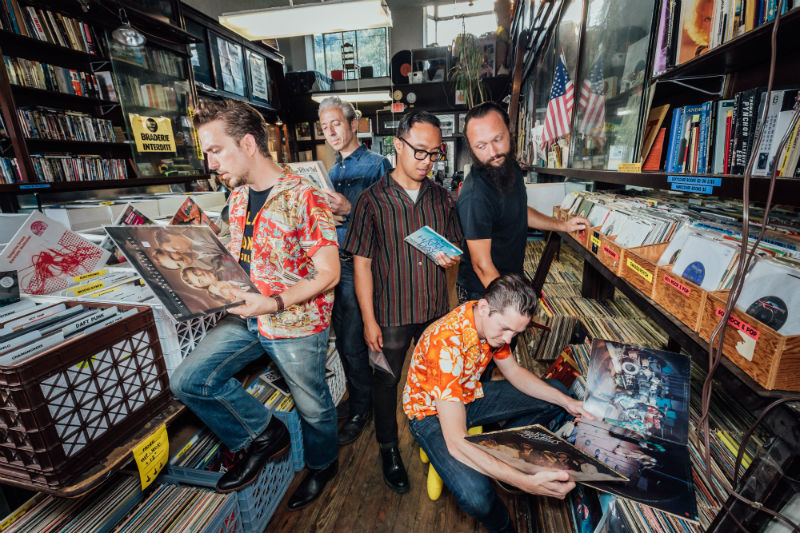
I was a fan of JD McPherson’s music the moment I heard his debut album, Signs & Signifiers, around seven years ago. This was high-energy rock 'n' roll that immediately brought to mind the early masters of the genre -- think Buddy Holly, Gene Vincent, Eddie Cochrane, Bo Diddley.
Rural Oklahoma native McPherson specializes in original material, not cover versions, and he and his dynamite group -- together for eight years -- put a fresh spin on music too often thought of as golden oldies, something safe and nostalgic. McPherson’s discography is thoroughly listenable and also includes 2015’s Let the Good Times Roll, 2017’s Undivided Heart & Soul (my personal favorite), plus Socks, his delightful album of new Christmas songs released late last year.
McPherson and his band -- bassist Jimmy Sutton, keyboardist Raynier Jacob Jacildo, drummer Jason Smay, and saxophonist/guitarist Doug Corcoran -- were in fantastic form when they played in Ann Arbor last summer as part of Bank of Ann Arbor’s Sonic Lunch concert series, and they return to town this Wednesday, April 17 for a show at The Blind Pig. I caught up with JD McPherson by phone last week as he was getting ready for a concert in Calgary, Alberta and had a lively discussion about everything from favorite recording studios to Socks to the reasons behind his rock 'n' roll sensibility.
Busting Up the Boys Club: Ladies Laugh Night at Ann Arbor Comedy Showcase

John Belushi said it. Christopher Hitchens also said it. Jerry Lewis said it, too. They all said the thing that they likely would have never said about any other group: women aren’t funny.
If you need proof that women are funny -- and you shouldn’t, but in case you do -- come out to Ladies Laugh Night at the Ann Arbor Comedy Showcase on Thursday, April 11. The show features an all-woman lineup of Brandi Alexander, Nicole Majdali, Kate Brindle, and Connie Ettinger.
Comedy Showcase owner Claudia Neeb includes more female comedians in the club’s lineup because “we believe in seeking out diverse types of comedians, including women. As a club, we try to ‘grow’ comedians by encouraging them to work on and strengthen their talent and then move onto the next level.”
Expected Greatness: UMMA's "The Power Family Program for Inuit Art: Tillirnanngittuq" shows Ann Arbor's role in popularizing indigenous Arctic art
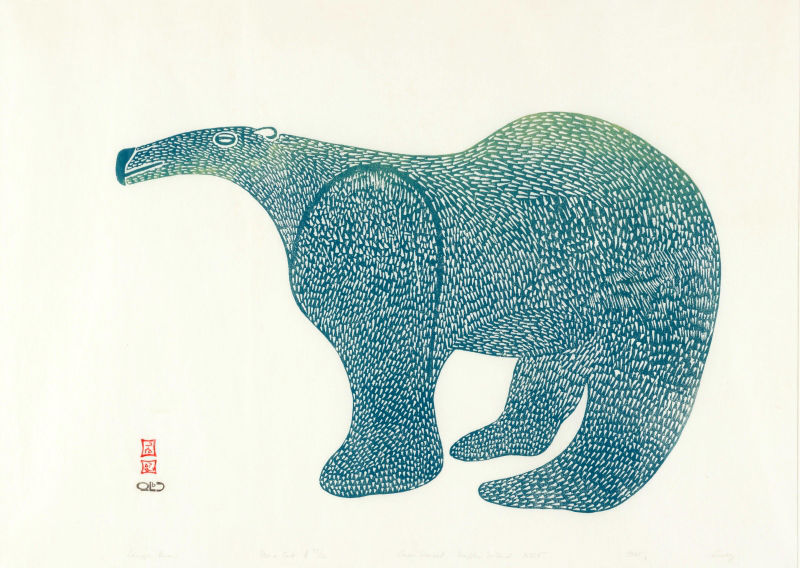
The influx of Inuit art in Ann Arbor began with Ann Arbor’s Eugene Power and Canadian artist James Houston. Power, a friend of Houston, became interested in the art and culture of Inuit peoples following his friend Houston’s research there, beginning in 1948. A decade later, Eugene Power and his son Philip founded a non-profit organization called Eskimo Art Inc. in Ann Arbor that operated as a wholesale distribution center for artworks imported from Kinngait (known then as Cape Dorset) Hudson Bay and Baffin Island. The organization sent profits to artists, funded art supplies, and organized artist training, including Japanese printmaking techniques. Inuit art continued to remain popular in the area, with Eskimo Art Inc. remaining open through 1994.
The Power Family Program for Inuit Art: Tillirnanngittuq exhibition includes many works that date to the beginning of the Power Family’s involvement with Inuit art and the subsequent creation of Eskimo Art Inc. Currently being shown at the University of Michigan Museum of Arts, the exhibition “celebrat[es] the exceptional gift of 20th-century Inuit art to the Museum by the Power family.” The exhibit features 58 works from the collection, which were promised as a gift to the museum in 2018. The title of the exhibition, Tillirnanngittuq, is the Inuktitut word for “unexpected,” referencing the tremendously positive public response to Canadian Inuit Art in Ann Arbor, and globally, beginning in the mid-20th century.
U-M takes on Sondheim’s "Sweeney Todd," a musical challenge and a macabre story

The musical theater students at the University of Michigan will take a walk on the dark side when they present their production of Sweeney Todd: The Demon Barber of Fleet Street at the Power Center, April 18-21.
Sweeney Todd is an unusual show, combining dark humor, odd characters, a bit of the music hall, a bit of the opera and quite a lot of blood.
Stephen Sondheim, the master of modern musical theater, has often taken on unorthodox musical theatre material from a survey of presidential assassins to a grim take on fairy tales to a bittersweet reworking of an Ingmar Bergman film.
But Sweeney Todd goes a few steps further into a grim story of revenge that balances horror with some deliciously off-kilter humor and some complex and compelling music.
Roustabout Theatre Troupe’s “Mad As A Hatter” Is A Tea Party Reunion With Old Friends
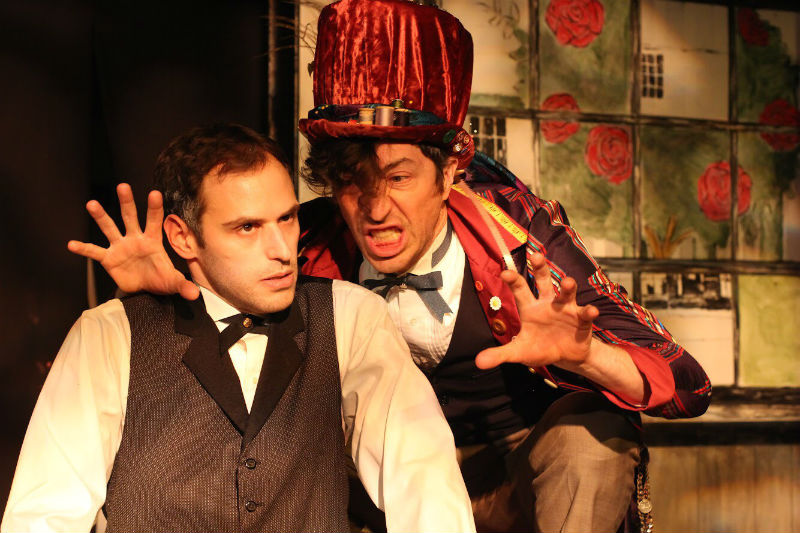
Why is a raven like a writing desk?
Whether we’ve read Lewis Carroll's books or not, most of us are familiar with the character Alice and her adventures in Wonderland. One of the more iconic figures is the Mad Hatter with his tea party and nonsense riddles. Alice was based on a real person, Alice Liddell, but what about the Mad Hatter? Playwright Michael Alan Herman has proposed that he was, one Theophilus Carter, a well-known (at the time) furniture salesman and inventor who, according to Herman and others, bears a striking resemblance to Sir John Tenniel’s original illustrations of the Mad Hatter.
Roustabout Theatre Troupe’s Mad As a Hatter -- directed by Joey Albright -- imagines Carter (Russ Schwartz) and Charles Dodgson (Lewis Carroll was a pseudonym) as school friends who grew up together then grew apart after Dodgson published his less than flattering portrayal of his good friend in Alice's Adventures in Wonderland. In the play, Carter is haunted by his literary alter-ego the Mad Hatter, who not only comes to life but also bears a striking resemblance to Dodgson (both Dodgson and the Mad Hatter are played by Jeffrey Miller).
The State of the Art of Surveillance: "Blind House: Utopia and Dystopia in the Age of Radical Transparency"
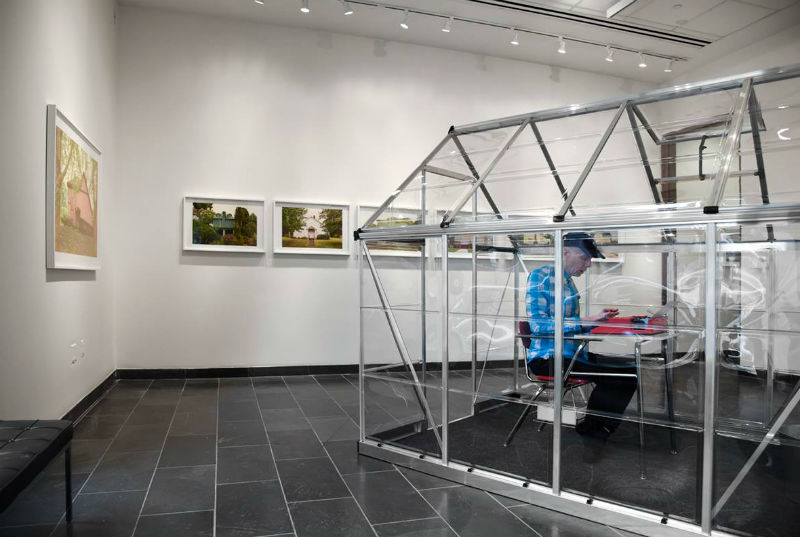
The Institute for Humanities Gallery is currently housing "Blind House: Utopia and Dystopia in the Age of Radical Transparency," a collaborative installation by artists Paloma Muñoz and Walter Martin. Along the walls are digitally altered photographs of the architectural exteriors of houses and in the center of the room a miniature glass house. There is a school desk in the center of the glass house, on top of which sits a red typewriter.
Visitors are free to enter the space, grab a blank sheet of paper from under the chair, and try to create their own utopia on paper. On the desk there are instructions for the visitor in English and Spanish: “1. Read and throw the existing utopia in the garbage. 2. Write your own utopia and leave it on the typewriter for the next participant. Please feel free to look through the garbage.”
In front of the desk, there is a trash can, which was filled with crumpled up, discarded utopias, demonstrating the past participation of gallery visitors in the work.


































